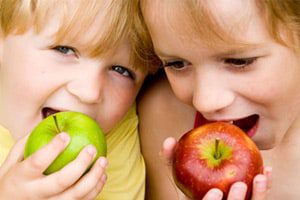
A new study reveals that children choking on food is not that uncommon. Candy was the most common culprit; however, a wide array of foods present choking problems for kids. Every day for the past ten years, some 34 children in the United States required treatment in hospital emergency rooms after having choked on food, […]
 A new study reveals that children choking on food is not that uncommon. Candy was the most common culprit; however, a wide array of foods present choking problems for kids.
A new study reveals that children choking on food is not that uncommon. Candy was the most common culprit; however, a wide array of foods present choking problems for kids.
Every day for the past ten years, some 34 children in the United States required treatment in hospital emergency rooms after having choked on food, according to Reuters Health. The study involved a group of what the was described as nationally representative hospitals and was published in the journal Pediatrics.
Children commonly choked on hot dogs, nuts, and seeds, in addition to candy and typically required hospital treatment. “These numbers are high,” Dr. Gary Smith, who worked on the study at Nationwide Children’s Hospital in Columbus, Ohio, told Reuters Health. Dr. Smith pointed out that, “This is an underestimate. This doesn’t include children who were treated in urgent care, by a primary care physician, or who had a serious choking incident and were able to expel the food and never sought care.”
Some 12,435 children age 14 and younger were treated for choking on food each year, which does not include the number of food choking deaths that the U.S. Centers for Disease Control and Prevention (CDC) reports—some 57 annually, according to Reuters Health. The database the team utilized does not provide sufficient information on choking deaths involving food, according to WebMD. The team analyzed injury surveillance data from 2001 through 2009.
Infants one year of age and younger were involved in about 38 percent of the childhood emergency room visits over choking on food. In fact, many of the babies were treated for choking on breast milk or formula, Reuters Health explained. Candies were involved in about one out of every four trips to the emergency. Meat, bones, and fruits and vegetables followed.
Of the children treated, ten percent required hospitalization and children choking on hot dogs, seeds, or nuts were two to three times likelier to need hospitalization according to the study. “We know that because hot dogs are the shape and size of a child’s airway that they can completely block a child’s airway,” Smith told Reuters Health, pointing out that seeds and nuts difficult to swallow when children put a lot in their mouths at one time.
The children’s average treatment age was 4.5 years of age and the group from infancy to children who were four years of age comprised 62 percent of the incidents studied, according to WebMD.
Dr. Ronald Litman, an anesthesiologist at Children’s Hospital of Philadelphia, told Reuters Health that it’s hard to tell from this study how many kids are “seriously affected” following a choking incident. “The vast majority of these kids, by the time they get to the emergency room, they’ve coughed or choked it out,” Litman, who wasn’t involved in the research, said, adding that that he and his colleagues see some children every year who have inhaled peanuts and require treatment in intensive care when their lungs become inflamed due to the fat in the nuts.
Smith, president of the non-profit Child Injury Prevention Alliance, said a lot of these choking accidents might be prevented with improved food design and labeling. as well as with increased parental oversight. “Clearly, rule number one is supervision” when kids are eating, Dr. James Reilly, from Nemours/Alfred I. duPont Hospital for Children in Wilmington, Delaware, told Reuters Health. Dr. Reilly, who was not involved in this research suggests cutting food into smaller pieces, for example, grapes should be cut in half for young children.


